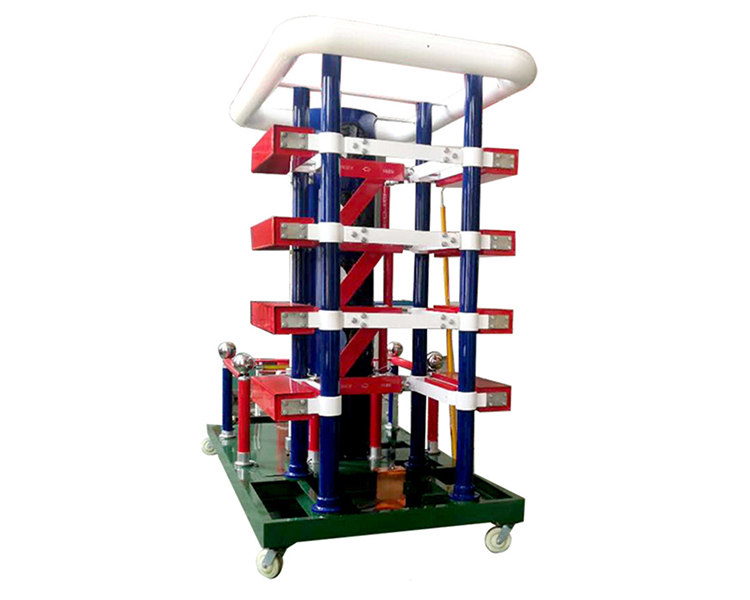
Insulation performance test
The core function of a lightning impulse generator is to conduct insulation impulse withstand voltage tests on high-voltage electrical equipment such as transformers, cables, insulators, etc. It assesses the insulation strength of these specimens under overvoltage by generating standard lightning impulse voltage full wave (± 1.2/50 μ s), lightning impulse voltage cutoff wave (wave head time 1.2 μ s, cutoff time 2-6 μ s), and operating impulse voltage wave (250/2500 μ s), ensuring that they can withstand instantaneous overvoltage impact in actual operation. Testing is an essential step before the operation of power equipment, and it should comply with standards such as DL/T848.5-2004.
Research on Discharge Mechanism
This device can be used to simulate natural lightning phenomena, helping researchers to gain a deeper understanding of the discharge mechanism of lightning and its impact on power systems and electrical equipment. By simulating the generated impulse voltage or current, the impulse breakdown and discharge process of gas, liquid or solid insulating media can be studied, providing experimental basis for insulation structure design and lightning protection technology development.
Equipment tolerance assessment
The generator can test the voltage resistance or impulse current resistance of components such as electronic parts, sockets, plugs, cables, lightning arresters, etc. For example, for lightning arresters, their residual voltage characteristics can be tested; For other devices, their electrical performance under the action of impulse current shall be assessed. This function is crucial for ensuring the safety of audio, video devices, and various high-voltage electrical appliances.
Widely applicable fields
With its functions, lightning impulse generators are widely used in quality inspection and appraisal institutions, metrology and testing departments, power equipment manufacturers, scientific research units, colleges and universities, as well as railway communication, aerospace, meteorological lightning protection and other fields. Its voltage coverage range is wide (from several hundred kV to tens of thousands of kV), and it can provide multiple standard or non-standard waveforms to meet the testing needs of different departments.
Technical features support function implementation
Generators usually use Marx circuits to achieve multi-stage capacitor parallel charging and series discharging, thereby generating high voltage pulses. Its technical features include: high voltage utilization coefficient: lightning waves are usually not less than 85%, and operating waves are not less than 80%.
Good load capacity: The circuit inductance is small, and impedance filtering measures are taken, which can generate standard shock waves even under large capacitive loads.
High degree of automation: Modern equipment often adopts constant current charging automatic control, digital waveform recording and analysis system, making wave adjustment convenient, easy to operate, good synchronization performance, reliable action, and improving the efficiency and accuracy of experiments.




